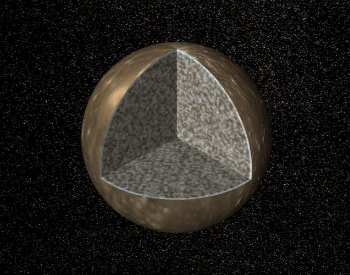
- Moon Name: Callisto
- Formed: 4.5 billion years ago
- Discovered: January 7th 1610 by Galileo Galilei
- Distance from Jupiter: Between 1,161,342 miles (perigee) and 1,178,741 miles (apogee)
- Distance from the Sun: Around 484,000,000 miles
- Time to Orbit Around Jupiter: About 17 Earth days
- Total Surface Area: 73,004,909 square miles
18 Callisto Facts for Kids
- Callisto formed about 4.5 billion years ago.
- Callisto was discovered by Galileo Galilei on January 7th, 1610, using a telescope.
- Callisto is one of Jupiter’s seventy-nine known moons.
- Callisto is the third largest moon in our Solar System.
- Callisto has a light atmosphere that contains carbon dioxide.
- Callisto has a radius of about 1,497 miles.
- The closest Callisto gets to Jupiter is 1,161,342 miles (perigee).
- The farthest Callisto gets from Jupiter is 1,178,741 miles (apogee).
- It takes Callisto about 17 Earth days to orbit the planet Jupiter.
- Callisto is almost the exact same size as Mercury, 99% to be exact, but only contains one third of the mass.
- Callisto is large enough to be considered a planet, but because it orbits Jupiter and not the Sun it’s considered a moon.
- Callisto has had a violent history; it has more impact craters on the surface than any other object in our Solar System.
- Scientists speculate that Callisto could contain or once contained life in its subsurface ocean.
- In 1973, Pioneer 10 was the first spacecraft to flyby and take close-up pictures of Callisto.
- In 1974, the Pioneer 11 spacecraft came within 488,700 miles of Callisto and was able to determine its mass.
- Between 1996 and 2001 the Galileo spacecraft had 12 encounters with Callisto; it indicated that Callisto had an atmosphere and potentially detected an underground ocean.
- In December 2000, the Cassini spacecraft took some awesome pictures of Callisto.
- In February 2007, the New Horizons spacecraft flyby of Jupiter allowed it to take pictures of Callisto.
Pictures of Jupiter’s Moon Callisto

Two images of Callisto via the New Horizons Long Range Reconnaissance Imager.Credit: NASA

A color of Jupiter’s moon Callisto taken by NASA Galileo spacecraft in May 20Credit: NASA

A wonderful rendering of what the internal structure of Callisto could look like.Credit: NASA
Additional Resources on Jupiter’s Moon Callisto
- In Depth | Callisto – NASA Solar System Exploration – A breath taking in depth view of Callisto on the NASA Solar System Exploration website.
- Callisto Photo Jounrnal at NASA – Look at some awesome pictures taken of Callisto by spacecraft and telescopes over the years.
- Callisto Moon – Wikipedia – Discover more amazing information about Jupiter’s moon Callisto on the Wikipedia website.
